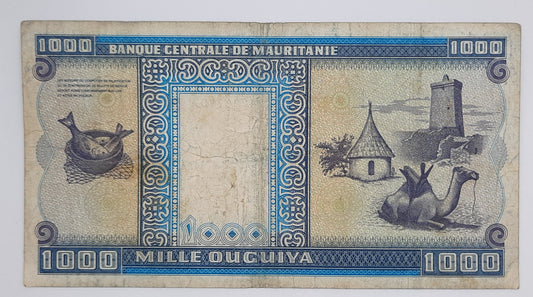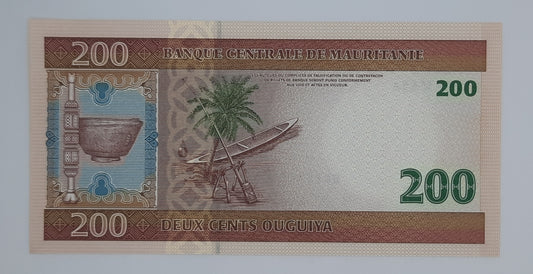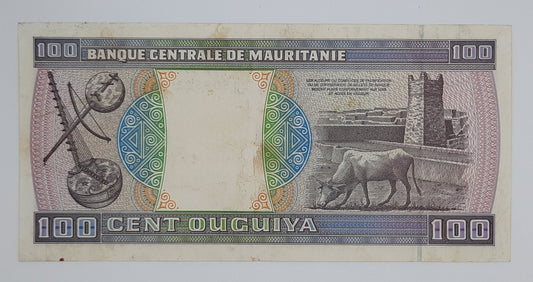Look up Country, Denomination or Year
-
2006 Mauritania, Banque Centrale De Mauritanie - 200 Ouguiya Banknote Pick P-11b UNC
Vendor:notescounterRegular price £2.39 GBPRegular priceUnit price / per -
1989 Mauritania, Banque Centrale De Mauritanie - 100 Ouguiya Banknote Serial No. 21509523 P-4d
Vendor:notescounterRegular price £6.89 GBPRegular priceUnit price / per -


1985 Mauritania, Banque Centrale De Mauritanie - 1000 Ouguiya Banknote Serial No. Y017 42227797 P-7b
Vendor:notescounterRegular price £18.00 GBPRegular priceUnit price / per
Collection: Mauritania
🇲🇷 Mauritania Banknotes – Desert Heritage, Islamic Identity & Currency Reform
Mauritania’s banknotes offer a fascinating glimpse into the cultural richness, economic independence, and Islamic heritage of this West African nation. From the early post-colonial issues to the modern polymer series, Mauritania’s currency reflects a journey of sovereignty, symbolism, and innovation.
🏛️ A Brief History of Mauritanian Currency
Pre-1973: Mauritania used the West African CFA Franc, a colonial-era currency shared with neighboring French-speaking countries.
1973: The country introduced its own national currency—the Ouguiya (MRO)—at a rate of 1 Ouguiya = 5 CFA Francs, breaking away from the CFA zone to assert monetary independence.
2018: A major redenomination took place, replacing the old Ouguiya (MRO) with the new Ouguiya (MRU) at a rate of 1 MRU = 10 MRO, simplifying transactions and modernizing the currency system.
🎨 Design Themes & Features
Mauritanian banknotes are known for their:
Islamic calligraphy and geometric patterns, reflecting the country’s religious and cultural identity
Scenes of desert life, agriculture, and architecture, including camels, mosques, and nomadic traditions
Use of Arabic and French, the country’s official languages
Transition to polymer notes, enhancing durability and security
Advanced features like holograms, UV elements, microtext, and transparent windows
📚 Why Collect Mauritania Banknotes?
Mauritania’s currency offers a compelling blend of:
Post-colonial independence and reform
Islamic and Saharan cultural symbolism
Rare denominations and polymer innovation
Whether you're drawn to the non-decimal system (with 1 Ouguiya originally divided into 5 khoums), the vivid desert imagery, or the modern polymer redesigns, Mauritania banknotes are a unique and rewarding addition to any world currency collection.





